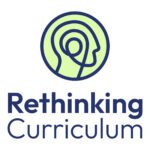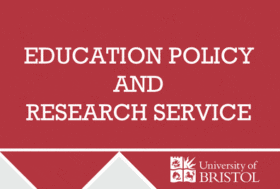Learning outdoors in nature from nature

 This article has been published as part of the Rethinking Curriculum project, kindly funded by The Helen Hamlyn Trust.
This article has been published as part of the Rethinking Curriculum project, kindly funded by The Helen Hamlyn Trust.
EDD MOORE, PRIMARY SCHOOL TEACHER AND ECO-COORDINATOR, UK
Context
Since the release of the Department for Education’s sustainability and climate change strategy in April 2022 (DfEDepartment for Education - a ministerial department responsible for children’s services and education in England, 2023), there has been more urgency for schools to teach children about how they can support their school to become zero-carbon by 2030, take climate action and get children out into nature, learning from nature.
Damers First School is located in a town called Dorchester in the county of Dorset. It has farmland nearby, with the Great Field near the school and a short walk to a hillfort. The school has a cohort of 500 children, with three classes per year group. Twenty-two per cent of the children are eligible for Pupil PremiumAdditional funding for publicly funded schools in England to raise the attainment of disadvantaged pupils of all abilities.
We started our environmental journey 12 years ago from a blank canvas. The school had large grounds but very little else. I believed that it was very important that children were learning outside about the world around them. My inspiration came from my granddad, who was a headteacher in a special school in Evesham. He would grow his own fruit and vegetables in his garden and make his own bread. He would spend time with his pupils, teaching them these important skills that they would be able to use in their adult lives.
Our curriculum journey
Embedding nature and the environment into our Damers First School curriculum, making it part of our ethos and creating a legacy, was an important part of inspiring children out into nature. Previously, the children could not identify the wildflowers, trees, birds or insects that were around them in the school grounds or wider community. This became extremely important and was the basis of putting sustainability and the natural world at the heart of our curriculum, through enquiry-based projects that go through every subject area like a golden thread.
Our curriculum journey is a whole-school endeavour, with support from the headteacher, senior leadership team and heads of year. We want learning to impact our pupils’ thinking and actions, to enable them to focus on issues at a school, community and global level. Our enquiry-based projects are planned to link with the natural cycles of the seasons and to open up a journey of meaningful exploration. We have used and developed the resources provided by The Harmony Project to further develop our curriculum approach. At Damers, we believe that building understanding and appreciation of the natural world is the first step towards nurturing a generation who actively want to care for their world.
There have been a few challenges along this journey. For example, it was difficult to find funding to buy equipment and establish an outdoor learning environment, including a school kitchen garden and nature area with a pond, chickens and bird hide. I spent many hours filling out application forms, and giving presentations to businesses and organisations about the outdoor learning provision that we wanted to create and why it was so valuable to our pupils. A lot of perseverance and resilience was needed, as there were plenty of knock-backs to start with, but once people saw for themselves what we were aiming to create, the funding slowly but surely started to come in.
Our curriculum work in practice: Wildflowers
Words associated with nature are disappearing from children’s vocabulary at an alarming rate, with children unable to identify wildflowers and trees around them. The Lost Words by Robert McFarlane and Jackie Morris informed our approach to improving our pupils’ knowledge, with its amazing illustrations and poems. Our Year 1 enquiry question for the term was: What is my favourite wildflower? I started by introducing a nature journal to document what the children discovered and identified, allowing them to look back at what they had found but also to use it to help teach other children and adults about the natural world around them too.
I also read a story to my class called ‘Secret Sky Garden’ by Linda Sarah and Fiona Lumbers, where a young girl turns a disused carpark into a wildflower meadow. This gave the children the idea of adapting a bare piece of land near the school that needed looking after and bringing it to life.
The Duchy of Cornwall, with support from Dorchester Town Council, agreed that the school could adopt a disused piece of land on the Great Field. This land is next to the school and was to be turned into a Damers’ wildflower meadow, through our pupils collecting different wildflower seeds from other wildflowers. This was a good way in which to teach them about the importance of nature’s life cycles. The children also learned that they did not need to go to a garden centre to buy the seeds.
Miles King, from People Need Nature (a local charity that highlights the positive relationship between people and nature), took the children out on a nature walk to the hillfort on Poundbury, where they discovered a field full of buttercups. The children were shown how to find and pick the buttercup seed pods, placing them in a paper envelope. These were then sown on the bare, disused piece of land that we had been given. The children stuck a buttercup into their nature journals and counted the petals and how many seeds they found in the pods, which they thought looked like pineapples!
The children were hooked and wanted to discover what wildflowers were in the school grounds. They used identification charts that I had put together and the iNaturalist Seek identification app to identify wildflowers and trees by looking at their leaves and flowers, to match up the correct ones. The children drew what they had found in their journals, labelling and writing down what they noticed, using their senses and ‘I wonder’ questions – what, when, where, how, why and it reminds me of – getting them to connect their observations with things that they already knew. Our approach was informed by John Law Muir, who has great examples of how to use a journal on his website.
The children discovered a range of wildflowers and plants in the school grounds, including teasel, which was used to comb cotton, and red-hot poker, which got its name from the instrument that was used to poke a fire because of its yellow, orange and red colours. Knapweed seeds are a great source of food for goldfinches. The children then wrote facts about the wildflowers in their literacy lessons, putting together their own identification booklets.
The children were also given a list of wildflowers from which they could pick the seeds. They ventured out with their families and friends at weekends to collect the seeds and sow them on their bare piece of land on the Great Field. It was great to hear children going to RSPB nature reserves, like Arne and Weymouth Nature Reserve, Dorset Wildlife Trust’s Lorton Meadows and Kingcombe Meadows, to find these seeds. This experience gave the children the chance to share the knowledge that they had learned in class in a different setting – with their families and friends, who were amazed at what they knew. Many children made their own wildflower meadow in their gardens or on their balconies, using pots or reusing different containers like a mop bucket, car wheel rims, wellington boots and wooden pallets.
The children then went on to identify what was growing in the school kitchen garden. They found out that there are both yellow and green beans and that carrots are not only orange, but also purple, white, yellow and red. They also found out that strawberries and raspberries taste much sweeter and they did not realise that rhubarb is grown in the ground, let alone what it tastes like. The children picked rhubarb, blackcurrants and blackberries, making a crumble in the school’s food technology room. They also took what they had picked home to make their own food creations.
At the end of the summer term, the children gave tours of the school grounds to their families, other classes in the school, Miles King (from People Need Nature), Dorset CPRE, Dorset Gardens Trust and Wessex MATMulti-academy trust - a group of schools working in collaboration, governed by a single set of members and directors trustee Lynne Cove. They correctly identified the wildflowers, using accurate terminology, and provided facts about them. Everyone was surprised by how much the children knew.
Our nature journalling project was informed by the National Education Nature Park and Climate Awards, which were launched in October 2023. This provides young people with the opportunity to map the biodiversity found in their school grounds using technology. This information will then help them to decide what they need to put in place to encourage more wildlife into their school grounds.
The children, who are now in Year 2, have raised money for an information board for the Damers’ Meadow on the Great Field, to help to educate the community and tourists about what wildflowers, insects and birds they might see, with facts using the knowledge that they have gathered. They have worked with Miles King to make sure that their identifications and facts are accurate. Nick Morris, from Wallis Agency, who puts together the information boards for The National Trust and Dorset Wildlife Trust, gave his time and expertise to support the project. The Damers’ Meadow Nature Information Board with QR code was unveiled in July 2024.
A whole-school approach
The focus on outdoor and enquiry-based learning is embedded across the key stages. Year 3 children have been learning about the natural wonders of the world and discussing whether there should be natural wonders in each county in the UK. Children have been out with their families visiting the natural wonders of Dorset. Year 2 have learned the importance of bees in our life cycle and the crucial role that they play in the production of our food. Reception have been outside planting seeds and growing their own vegetables and cooking a dish with what they have harvested. Year 4 came up with their own nature watch, tallying what they saw and found each week while on a nature walk in the school grounds. This inspired the community to add what they had seen too.
Top tips for other educators
- A great place to start with nature-based learning is to consider how you can take your planned lessons outside. Aim to teach one lesson outside every day. For example, you could start with sharing a story outside at the end of the school day.
- Take one subject area and think about the opportunities for outdoor learning when putting together your medium-term plan. The easiest curriculum subjects to begin with include science and geography. You are also likely to spot opportunities to take learning outside in art, design and technology, English and PSHE. Before you know it, you’ll be extending outdoor learning to your history, RE, maths and computing lessons.
- Taking part in Outdoor Classroom Day is an excellent way of getting started when it comes to outdoor learning. This event takes place twice a year, giving you and your colleagues plenty of time to plan ahead and get the whole school involved (maybe even the wider community, too!).
- Schools can take part in the RSPB Big Schools’ Birdwatch in January and February, and then Plantlife’s No Mow May and Butterfly Conservation’s Big Butterfly Count, which takes place in July and August.
Resources
John Muir Law, Nature Journal Connection: https://johnmuirlaws.com/the-nature-journal-connection
Learning through Landscapes: https://ltl.org.uk
National Education Nature Park: www.educationnaturepark.org.uk
The Harmony Project: www.theharmonyproject.org.uk
Woodland Trust: www.woodlandtrust.org.uk/support-us/act/your-school/resources
References
Department for EducationThe ministerial department responsible for children’s services and education in England (DfE) (2023) Sustainability and climate change: A strategy for the education and children’s services systems. Available at: www.gov.uk/government/publications/sustainability-and-climate-change-strategy/sustainability-and-climate-change-a-strategy-for-the-education-and-childrens-services-systems (accessed 15 August 2024).
Macfarlane R and Morris J (2017) The Lost Words. London: Hamish Hamilton.
Sarah L and Lumbers F (2018) The Secret Sky Garden. London: Simon & Schuster.

 This article has been published as part of the Rethinking Curriculum project, kindly funded by The Helen Hamlyn Trust.
This article has been published as part of the Rethinking Curriculum project, kindly funded by The Helen Hamlyn Trust.








